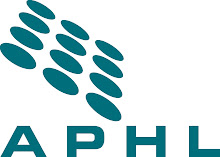A crucial element in response to a large-scale outbreak, such as the novel H1N1 virus, is rapid reporting of laboratory test results. Lab test results must reach the right people at the right time. Without this information, important public health decisions cannot be made.
Public health labs lack a single, standardized way to exchange laboratory data electronically. Right now, only a handful of state labs can send their H1N1 results electronically to CDC—most rely on some combination of sending spreadsheet attachments through email, uploading results to a secure website, calling in or faxing their results. These limitations apply to CDC as well as public health labs.
Some progress has been made through the Public Health Laboratory Interoperability Project (PHLIP), a joint undertaking by APHL, state public health laboratories and CDC. PHLIP aims to link government labs nationally to provide fluid electronic dialogue among laboratories and CDC. PHLIP's key goal is interoperability—the ability for different types of systems, including computers, networks, operating systems and applications, to work together effectively to exchange information in a useful manner. Essentially, this means systems talking to each other.
Much more needs to be done.
Many federal task forces have identified the need for electronic laboratory reporting; however adequate funding for this activity has not been identified. An expert panel convened by ANSER estimates the cost to develop and maintain electronic laboratory messaging capability at state and local public health labs is at least $200 million in federal funding annually. Without this investment, lab results will continue to be trapped in local, state and federal silos where we cannot protect America's health.
Thursday, May 7, 2009
Subscribe to:
Post Comments (Atom)





No comments:
Post a Comment